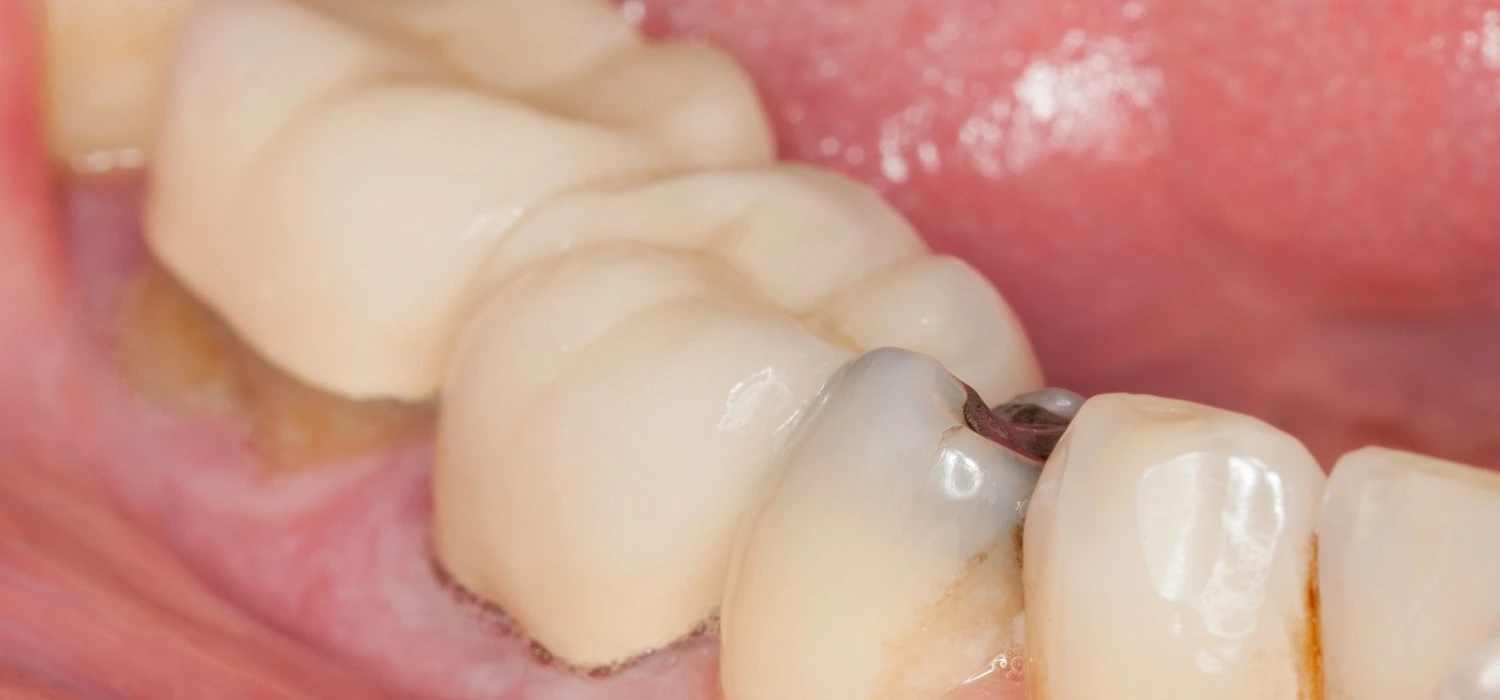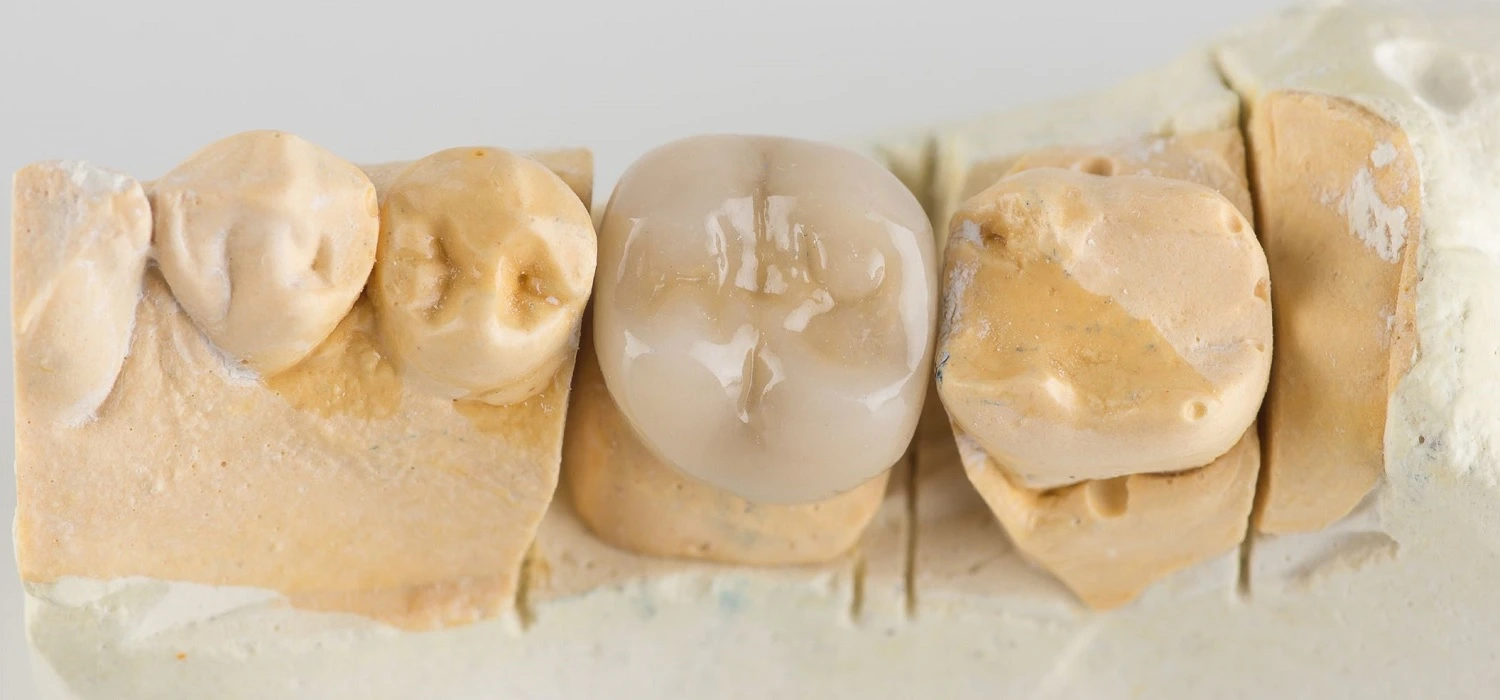Last Updated on: 2nd January 2026, 06:12 am
It is important to know the causes and treatments of cavities under dental crowns to avoid serious complications. Teeth are commonly affected either by cavities, fractures, or trauma. Fortunately, there are alternatives such as dental crowns to replace a lost or damaged tooth.
What are Dental Cavities?
Tooth decay is a common problem that occurs when bacteria accumulate on the surface of the teeth and combine with food debris to form acids that cause holes or cavities. If the decay is not treated, it can affect the nerve of the tooth, causing pain, infection, and even loss of the tooth.
Foods high in sugar such as candy, honey, soft drinks, fruit juices, and milk easily result in tooth decay. However, carbohydrates present in other foods like bread, potatoes, cakes, and the like can also cause cavities. The best way to prevent cavities is to brush and floss three times a day to remove bacteria and food debris from the teeth.
What is a Dental Crown?
Dental crowns, also called “dental sleeves”, are fixed prostheses placed to protect the tooth when it has lost much of its structure or is weakened. The crown is permanently attached to the remaining part of the tooth, using a special cement.
Cavities Under Dental Crowns
It is often believed that if a part of the tooth is replaced with a crown, it will not suffer further damage. However, although crowns are designed to be unaffected by decay, the remaining tooth tissue underneath can still deteriorate. Over time, natural changes occur in the teeth and gums that can affect the adaptation of the prosthesis to the tooth, creating small spaces where bacteria and food debris can accumulate, thereby causing cavities.
Do Crowns Last Forever?
Although it would be ideal, dental crowns do not last forever; they have a limited lifespan. Crowns are estimated to last an average of 10 years. Despite everything, there are patients whose crowns have lasted many more years thanks to good hygiene habits and dental care.
What are the Symptoms of Cavities Under Dental Crowns?
Even during a dental check-up, it is not easy to detect cavities under a dental crown, since in most cases they are not visible to the naked eye. X-rays are an important tool for their detection. For this reason, it is essential to know how to recognize the symptoms of this condition and seek dental care if it occurs.
Symptoms may vary depending on the state of the tooth:
1. If the nerve of the tooth has not been previously treated
Spontaneous pain often occurs, as well as sensitivity to hot and cold. In very advanced cavities, there could even be a pain when chewing. In some cases, patients may not experience any symptoms at all.
2. If the nerve of the tooth has already been treated before crown placement
There is usually no pain in the presence of cavities, which makes it possible to detect them only during a visit to the dentist or through X-rays. It is also likely that the patient will notice the presence of cavities due to the dislodgement of the crown. However, when pain occurs in a non-vital tooth, it may be due to an infection in the supporting tissues caused by advanced decay or the presence of an infection.
Treatment Options
The best preventative strategy is to go to the dentist for a timely diagnosis, supported by the use of diagnostic X-rays. If the tooth is decayed, the crown may need to be removed to properly clean and restore the tooth. If pain is present, a root canal will likely be required to remove the affected nerve.
When dental caries have been eliminated and there is no more pain, the dentist can place a new crown with a proper fit. However, this will depend upon the level of destruction the decay has caused to the tooth; in severe cases, the decay can be so extensive that restoration is impossible and tooth loss is inevitable. If the extraction of the tooth is irremediable, the dentist can choose to place an implant or permanent dental prostheses.
How to Prevent the Appearance of Cavities Under Dental Crowns?
Is a simple but important measure to prevent cavities under crowns. Proper oral hygiene follows these tips:
• Brush your teeth at least 3 times a day after each meal, making sure you clean all surfaces.
• Use fluoride toothpaste to strengthen teeth and make them more resistant to acids produced by bacteria.
• Remove food debris that accumulates between the teeth and gums with floss.
• Clean the area between the crown and the gum line with interproximal brushes, since most of the plaque and food remains accumulate in this region.
• Use oral irrigators to help reduce food debris and the formation of plaque bacteria.
In addition, it is recommended to visit the dentist every 6 months for regular dental cleanings and a complete dental examination, including X-rays, to detect cavities and other dental conditions early, which will make treatment easier and cheaper.
To those who have braces or planning to get one, you might consider reading our article about cavities caused by braces.
Conclusion
In conclusion, dental caries can appear under dental crowns despite being a prosthesis designed to protect and replace a dental structure. It is important to know how to recognize the symptoms of this condition and seek dental attention if they occur.
Treatments can range from tooth cleaning and restoration to extraction and placement of an implant or dental prosthesis. The best way to prevent cavities is to maintain good dental hygiene and visit the dentist regularly for checkups.
Frequently Asked Questions
Can a cavity form under a dental crown?
Yes, a cavity can develop under a crown. Even though the crown itself is resistant to decay, the tooth structure underneath can still decay if proper oral hygiene is not maintained. Bacteria and food particles can get trapped at the margins of the crown, leading to decay.
How do dentists treat tooth decay under a dental crown?
To treat a cavity under a dental crown, the dentist will typically need to remove the crown to access the decay. The decayed area is then cleaned and restored. Depending on the extent of the damage, a new filling or root canal treatment may be necessary. Once the decay is treated, a new crown will be placed to restore the tooth.
What causes tooth pain under a crown?
If you have a cavity under a dental crown, it can lead to pain, sensitivity, and eventually an infection if left untreated. The decay can cause the crown to become loose or dislodged. If the decay progresses significantly, it may result in the need for a root canal or even tooth extraction.
How do you prevent cavities from developing under a crown?
Preventing dental cavities under crowns involves maintaining good oral hygiene practices:
- Brush your teeth at least three times a day, especially after meals.
- Use fluoride toothpaste to strengthen teeth and resist bacterial acids.
- Floss daily to remove food particles and plaque between teeth.
- Clean the area between the crown and gum line with interdental brushes.
- Use oral irrigators to reduce food debris and plaque formation.
- Visit the dentist every six months for regular check-ups and cleanings.
Can a new crown become decayed in 2 to 3 years?
Yes, and the symptoms of dental cavities under crowns can include:
- Spontaneous pain or sensitivity to hot and cold if the tooth nerve is intact.
- Pain when chewing or biting.
- Loosening or dislodgement of the crown.
- In the case of previously treated nerves, there may be no pain, but an infection can cause discomfort in the supporting tissues.
Share:
References
1. Cavities/tooth decay. (Mar 19, 2022). Mayoclinic.org. https://www.mayoclinic.org/diseases-conditions/cavities/diagnosis-treatment/drc-20352898
2. Lindberg, S. (Ene 19, 2021). How long does a crown last? Average lifespan of a dental crown. Healthline. https://www.healthline.com/health/how-long-does-a-crown-last
3. Dental Health Society. (Sep 3, 2021). What to do About Cavities Under a Dental Crown. Dental Health Society. https://dentalhealthsociety.com/crowns/what-to-do-about-cavities-under-a-dental-crown/
4. Dental, N., City, S., Square, M., Parade, M., Siah, K., Chong, J., … & TMJ, T. J. What Problems Could Develop with a Dental Crown?: https://www.nofrillsdental.com/what-problems-could-develop-with-a-dental-crown/
5. Tackling tooth decay. (2013). The Journal of the American Dental Association, 144(3), 336. https://doi.org/10.14219/jada.archive.2013.0121
6. Cavities: Tooth Decay, Toothache, Causes, Prevention & Treatment. (Ene 14, 2020). Cleveland Clinic. https://my.clevelandclinic.org/health/diseases/10946-cavities
7. Dental Crowns: What Are They, Types, Procedure & Care. (Ene 14, 2020). Cleveland Clinic. https://my.clevelandclinic.org/health/treatments/10923-dental-crowns
8. Dental Crowns. (June 3, 2003). WebMD. https://www.webmd.com/oral-health/guide/dental-crowns
-
Nayibe Cubillos M. [Author]
Pharmaceutical Chemestry |Pharmaceutical Process Management | Pharmaceutical Care | Pharmaceutical Services Audit | Pharmaceutical Services Process Consulting | Content Project Manager | SEO Knowledge | Content Writer | Leadership | Scrum Master
View all posts
A healthcare writer with a solid background in pharmaceutical chemistry and a thorough understanding of Colombian regulatory processes and comprehensive sector management, she has significant experience coordinating and leading multidisciplina...


















